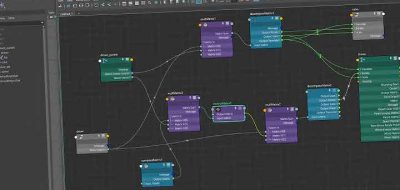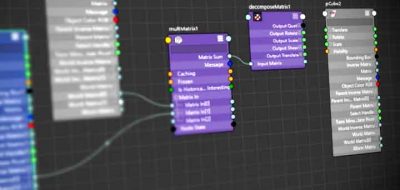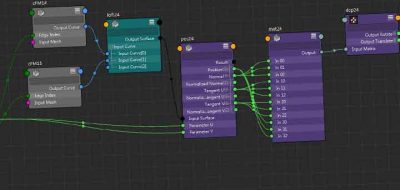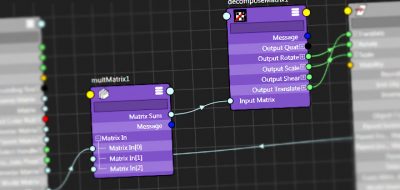Vasil Shotarov has been taking a look into costly constraints in his rigging work and replacing them with systems that use native Maya Matrix Nodes. Vasil already documented his dive into creating a matrix node based twist calculator, crucial for rotating forearms on a character rig. He has also had a look at creating simple matrix node constraints too. The last of the three, offers a look into creating a Maya Rivet using Matrix Nodes.
“Rivets are one of those things that blew my mind the first time I learned of them. Honestly, at the time, the ability to stick an object to the deforming components of a geometry seemed almost magical” Shotarov says. Using the traditional methods for creating a Maya rivet can become slow. The rivet needs to wait for all the underlying geometry to evaluate before it can do its thing. Maya’s parallel rig evaluation has increased that performance significantly, yet it is still worth simplifying Maya rivets.
Shotarov presents the differences between the Maya follicle and aimConstraint rivet with his article, and makes a case for using matrix nodes rather than follicles. “If you are anything like me, you would really like the simplicity of the graph, as we literally are taking care of the full matrix construction ourselves.” Shotarov says. It also becomes much cleaner without constraints or follicle shapes in the outliner.







